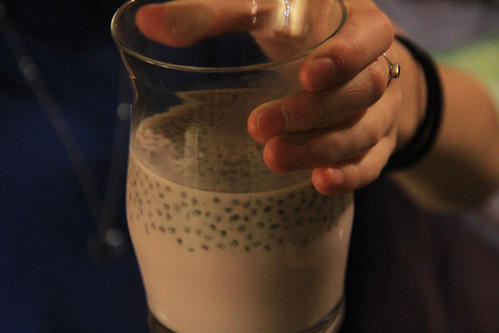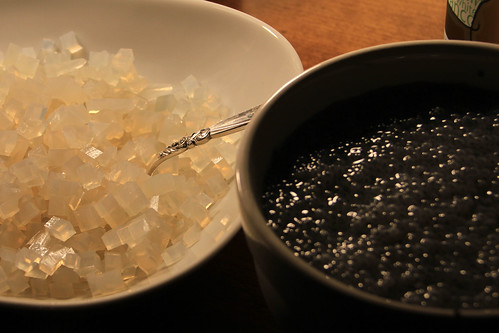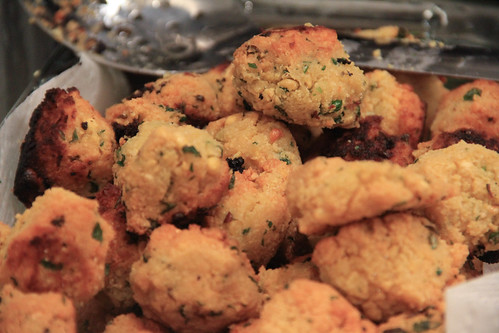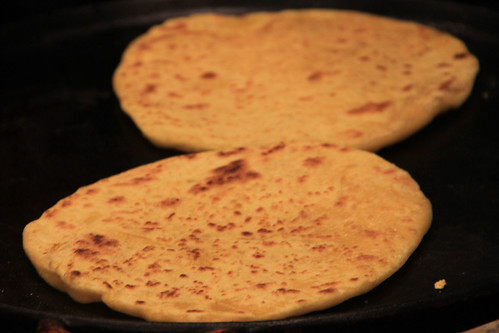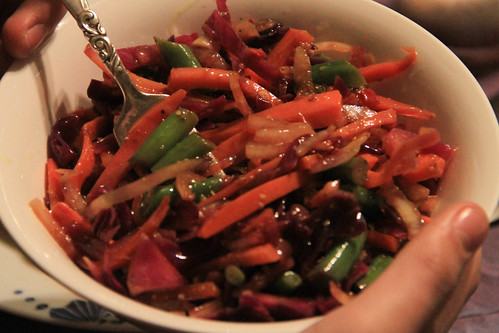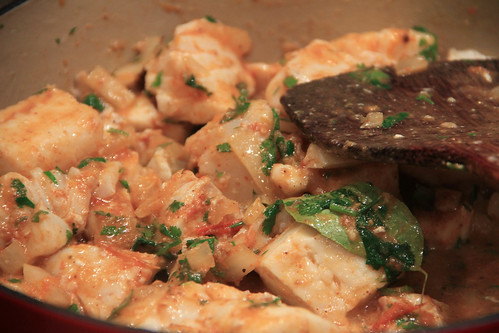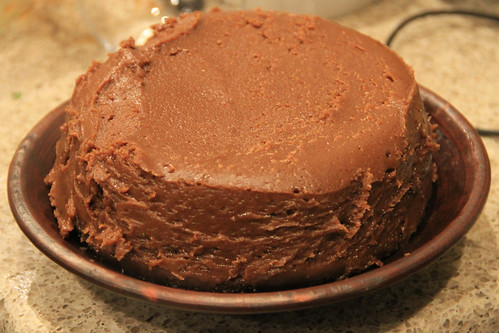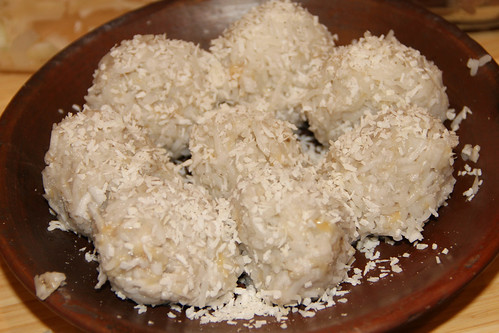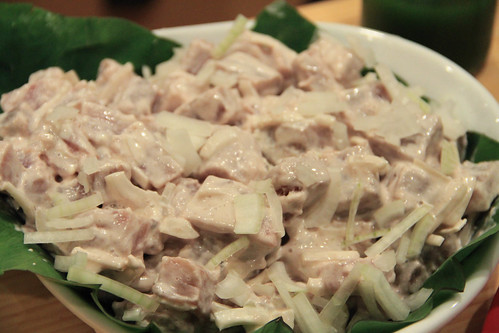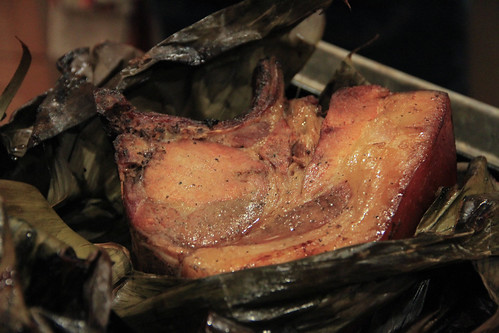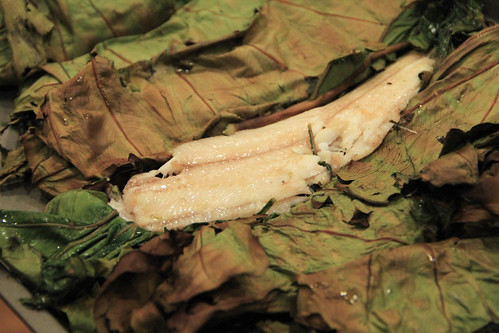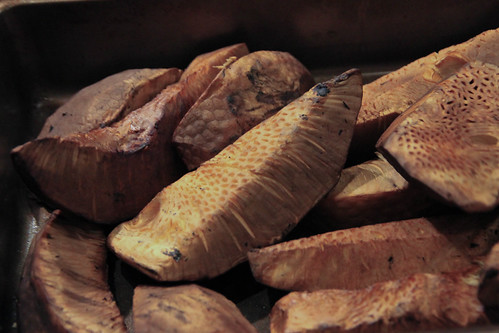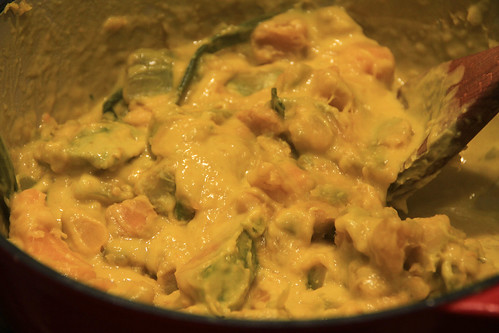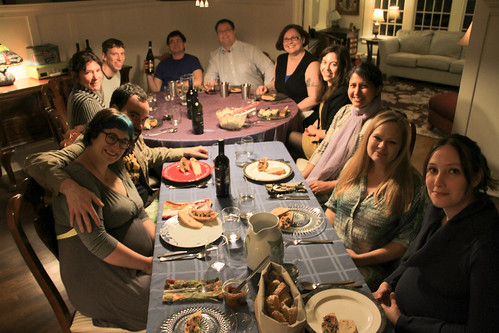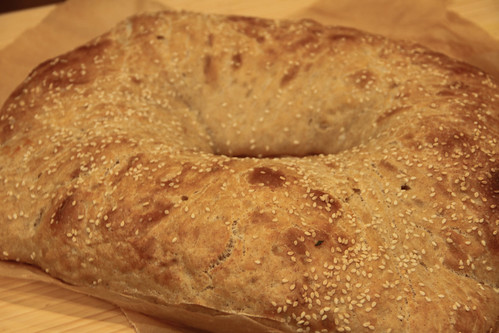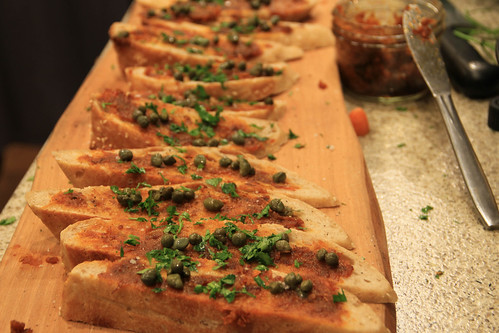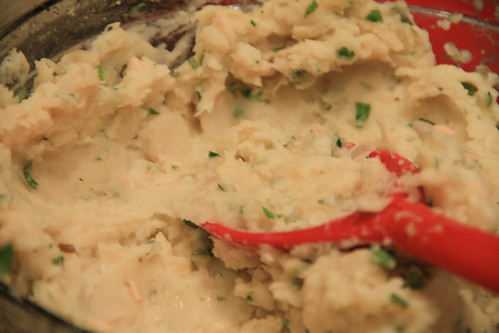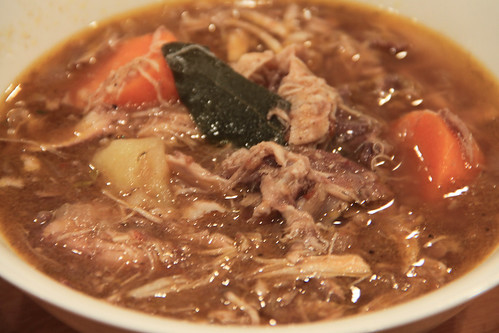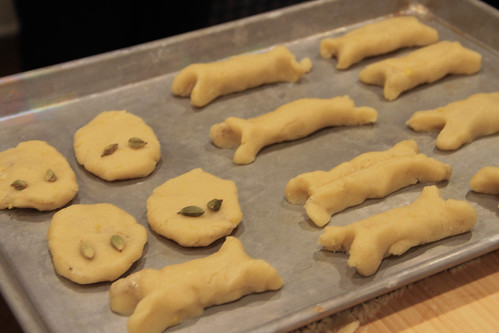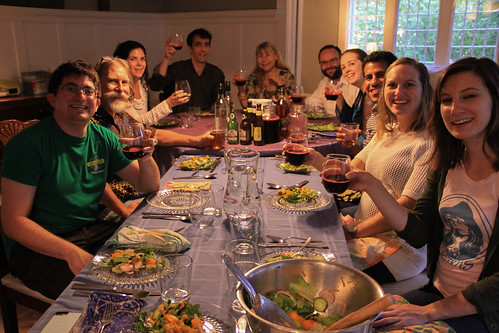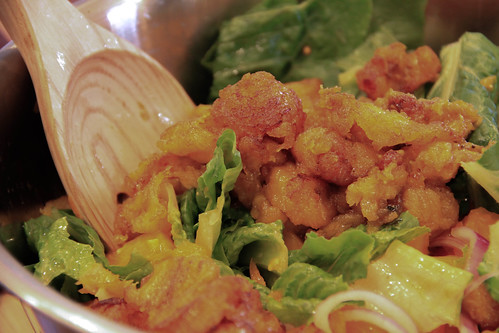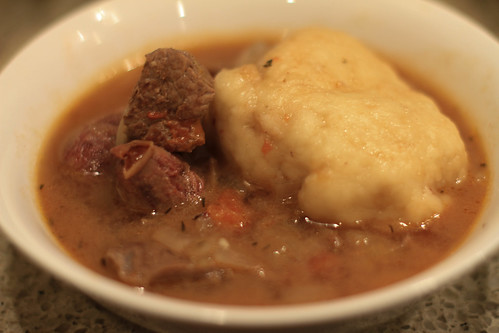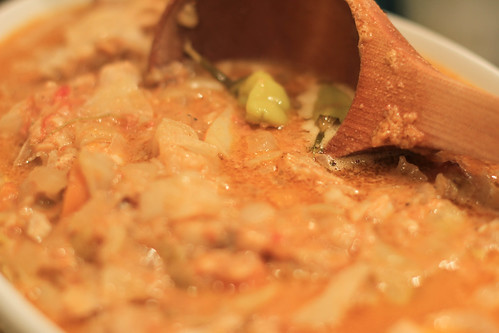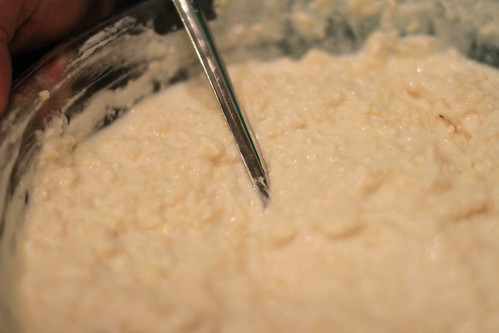Writ large, Mauritania is where two larger regions converge in the far west of the African continent. The north is the southwesternmost portion of the Maghreb, bordering Algeria and the disputed Western Sahara which is occupied by Morocco. The south is where the Sahel, the semi-arid strip south of the Sahara but north of the rainforests of West Africa, meets the sea; it borders Mali and Senegal. The population, and thus the food, reflects this division. To generalize over the complexities, it's people of North African descent who speak a dialect of Arabic in the North, and sub-Saharan Africans in the south. There isn't a ton of documentation of Mauritanian cuisine online, so I was lucky to have plenty of help. Marion worked at the American Embassy in Nouakchott, the capital, and introduced me to her friend Sarah who still lives there. Rachel was a Peace Corps volunteer in the south. And the Jones family, who lived there for several years, led a very special end-of-meal experience.
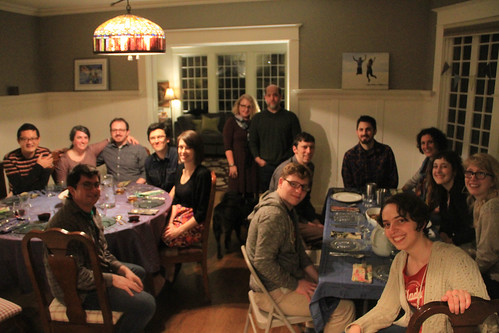
Our guests were Rachel, David, Scott and wife, Eric, Melia, Chelsea, Sarah, Estel, Douglas, and our guests of honor the Joneses, who lived in Mauritania for six years.
Méchoui | Roast meat
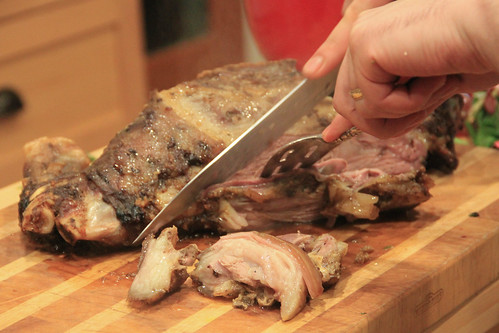
A week prior, I saw whole frozen goat legs at the Vietnamese supermarket. In a mildly misguided assumption that it would be the appropriate meat, I bought one for this meal, and started defrosted it. Then Sarah told me that when such a roast is done, it's typically lamb; since goats are prized for their milk, they're not as frequently eaten. But in a sort of Plan B for "doing it as they'd do," we agreed that most important is to use what you have.
While Mauritanians and neighbors to the north use the same name for roasted meat, "if you want to make it real Mauritanian way then yes keep it very simple, however spices and influence from the maghreb are more and more changing the Mauritanian cuisine." Much as I like cinnamon and cumin and all that good stuff, I restrained myself and followed Sarah's advice to simply use generous doses of butter, olive oil, garlic, salt and pepper, cutting slits in the meat to let the seasoning penetrate. I happened to see goat butter at the store, so I used it, figuring that'd be appropriate. From there, I simply put it in a roasting pan, tented with foil, and baked for a few hours on a relatively low heat.
The verdict? Our guests who'd lived in the country proclaimed it better than what they'd eaten there, but missing "the Mauritanian spice": sand.
Thiéboudienne | Spiced rice with fish and vegetables | Recipe
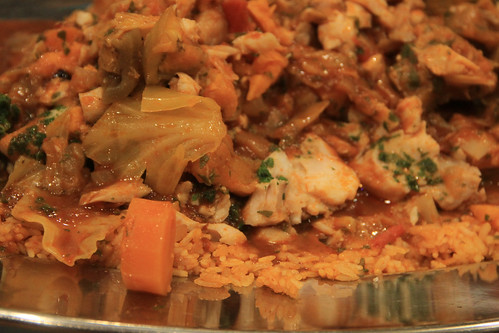
It's got about as many spellings as "baba ghannoush," but call it "cheb" or "thieb" and someone from the region ought to know what it means. While this rich and complex dish is best known as Senegal's national dish, it's also enjoyed — when scarce resources allow — in the south of Mauritania.
My translation of the name glosses over the complexity. There's fish in two forms, both in whole pieces as well as mixed with spices and fried in little balls. There's a flavoring base, plus a bunch of other vegetables with spices. You steam the rice, and then you boil it in the broth in which the vegetables and fish cooked. And then there's tamarind. That's a lot of ingredients and textures!
This is the sort of labor-intensive dish you serve for a big group, not just a meal for one or two. Despite getting a few parts of the technique wrong (probably because I only printed up the text and forgot to review the highly instructive photos right before cooking), this was probably the richest dish, with the most complex flavors and textures, I've cooked so far of Africa's many Atlantic-coast countries.
Haako | Greens with peanuts and millet (recipe below)
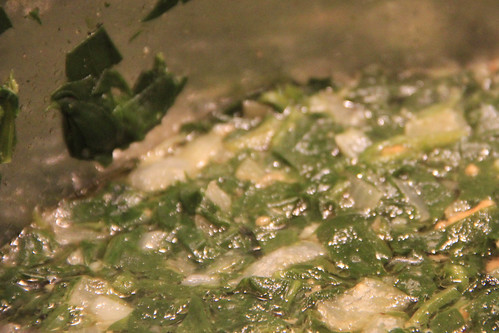
From the same region, but on the more humble side of the spectrum, is this basic sauce, similar to many we've cooked from various African countries. According to Rachel, the opportunity to eat this dish doesn't come around all too often for some, who may go days on end subsisting on simply rice and oil. This recipe comes from one of her friends.
Serves 6
6 Pounds of Greens (About a pound of greens per person – spinach, collards, broccoli rabe all work well) ground peanuts One medium onion 2-3 cloves of garlic 1 smallish/medium red chilli Oil Salt About 50 ml of millet per person
First, wash the greens. If they are really dirty, do it in the bathtub or another large tub. Several times, til all of the dirt is off. Once washed, grab a handful and ball it up, cut it into thin strips, as thin as possible. Discard stems. Put shredded greens into boiling lightly salted water for 15 minutes or so. Drain most of the water, leaving a little bit at the bottom. In a pan, heat oil and add diced onion and garlic. Add chilli – you can use fresh chilli or cheat like me and use sambal olek. Put a bit of the spinach mixture into the pan, return to large pot, all together. Let simmer over very low heat for 20-30 minutes. In the meantime, cook the millet (read directions on the package, it’s like making rice).
When ready to eat, spoon millet into one large bowl. Add the spinach sauce over the top, but only in the middle. Make sure everyone has washed hands and dig in... after it’s had a chance to cool down.
Thiakry | Thickened milk and grain dessert
A refreshing, sweet, filling, and fairly nutritious dessert, enjoyed by many here and across the region sucked out of the corner of a plastic bag purchased from a street vendor. Also from Rachel, the recipe:
Millet, Raisins, Sugar, Butter, Vanilla sugar (or extract), Lait caillé OR yogurt (lait caillé is a fermented milk similar to yogurt that I've never found in the US, so the latter is a perfectly reasonable substitute)
Steam the millet until it is soft. Add butter, raisin, vanilla sugar, sugar. Add lait caillé or yogurt, chill and serve.
No quantities given because what makes a good thiakry is highly subjective, but fortunately it's easy enough to tweak.
Atai | Tea ritual | Video

The Joneses gave us a real treat: a proper Mauritanian tea service, on the living room rug. My concern that they'd brought four cups for a crowd of sixteen proved unnecessary, as the the tradition is to pass the cups among as many people who are present without concern for, you know, sanitation. (Apparently this extends to public settings too, including the arrivals hall at the airport!) With a crowd, a small teapot, and a ritual that involves rinsing, discarding, and adjusting, it takes a while, but what's the rush? The full treatment involves three little cups: the saying goes that the first one is bitter like life, the second sweet like love, and the third gentle like death.
The tea itself is what's known as gunpowder, a Chinese green tea where each leaf is rolled into a little pellet, along with sprigs of fresh mint. For the sweet-as-love glass, it's indeed very sweet. To the extent that your talent allows, pour the tea between glasses to at once dissolve the sugar, cool the drink down, and develop a foamy head.
Dattes au crème | Dates and cream
Marion and Sarah advised that a wonderful, and traditional, snack was to dip dates in cream. I had trouble ascertaining the specific type of each, so I erred on the side of delicious, with fresh (not dried) Medjool dates, and crème fraîche. If you dislike either dates or crème fraîche, you won't like this. Otherwise, you'll wonder why don't eat this, like, all the time. A beautifully rich and indulgent dish. I just reread Sarah's email that said to serve this at the start of the email, but goodness, this went well as a dessert with tea at the end of the meal.

